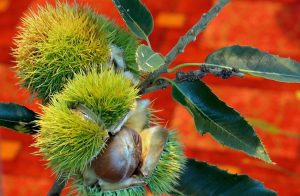NOTE: The following Press Release from the Global Justice Ecology Project was posted by the Society of Environmental Journalists. The Global Justice Ecology Project coordinates, administrates, and fundraises for the Campaign to STOP GE Trees.
Genetically Engineered CHESTNUT LOSES
Field Research was on wrong variant since 2016
For Immediate Release Dec. 19th, 2023
The TACF press release focused on two major reasons that they withdrew their support.
POOR RESULTS:
TACF cited performance limitations for all Darling progeny, which included lack of blight resistance, unexplained high mortality rates, and poor growth.
Potential performance problems with genetically engineered trees in the wild has been a focus of concern of critics. Even TACF’s former staff geneticist Dr. Paul Sisco urged caution, calling for 50 years of testing before releasing genetically engineered long-lived organisms into the wild. Sisco also expressed concerns about potential unintended side effects on the trees and the organisms that interact with them as they mature.
SIGNIFICANT ERROR:
In their release, TACF revealed that it had been conducting research and testing on the wrong GE tree due to a “significant identity error in the propagation materials” supplied to them by SUNY-ESF.
TACF stated in their Dec 8 press release that, “Independent confirmation now shows all pollen and trees used for this research was derived not from Darling 58…”
NEED TO CORRECT THE RECORD:
The public relations efforts of SUNY-ESF, TACF, and other pro-GMO organizations have led to widespread media coverage, with stories in small newspapers to major publications like the New York Times treating the D58 as “the solution” to the problem of chestnut blight, and the best way to restore the American chestnut to the forest. However, with TACF officially withdrawing its support for D58, it is now important that these and other news outlets inform the public that the overwhelming support for the GE tree by TACF was misplaced and the D58 GE chestnut does not work.
[Beginning at the turn of the last century, the American chestnut tree was devastated by logging and blight. TACF and SUNY-ESF have been promoting “restoration” of the species through the use of the D58. ]
The Campaign to STOP GE Trees has long argued that the D58 is a Trojan Horse, promoted and supported by the timber and biotechnology industries, to gain public acceptance for GE trees and pave the way for other commercial applications of GE trees. Despite TACF’s revelation of the performance problems and the identity error, the regulatory threat still looms, and the Campaign to STOP GE Trees remains vigilant until the USDA rejects the petition to deregulate this ill-conceived experiment.
REGULATORY CRISIS:
The failure of the Darling 58 project serves as a cautionary tale of publicity-driven science and highlights the need for a more robust regulatory environment.
The deregulation of the D58 has taken longer than expected, which is often blamed on public opposition by critics including the Campaign to STOP GE Trees. But if the deregulation process was consistent with the timeline anticipated by TACF and SUNY, the first ever release of a genetically engineered organism intended to contaminate its wild relatives and spread in the wild would have been with a defective GE tree that could have sounded the death knell for remaining wild American chestnuts.
Moreover, new regulations have been promulgated that provide even less safeguards and would allow genetically engineered trees to be released into wild forests without any regulatory oversight.
AVAILABLE FOR INTERVIEW:
The Campaign to STOP GE Trees has a number of experts to provide interviews for journalists seeking to explore this story.
Numerous individuals and organizations, such as the American Chestnut Cooperator’s Foundation are working to restore American chestnut populations without resorting to genetic engineering methods. Reporters interested in this can be provided leads for interviews.
For more information, please contact Steve Taylor, communications director for the Global Justice Ecology Project. steve@
LINKS TO EXAMPLES OF PREVIOUS COVERAGE:
- https://countercurrents.org/
2023/12/controversial- genetically-engineered- chestnut-tree-loses-support- from-its-backers/ - https://thehill.com/opinion/
energy-environment/3747170- that-new-chestnut-usda-plans- to-allow-the-release-of-ge- trees-into-wild-forests/ - https://www.nytimes.com/2020/
04/30/magazine/american- chestnut.html - https://thehill.com/opinion/
energy-environment/380363-the- forests-are-in-crisis-but- biotechnology-is-not-the- solution/

